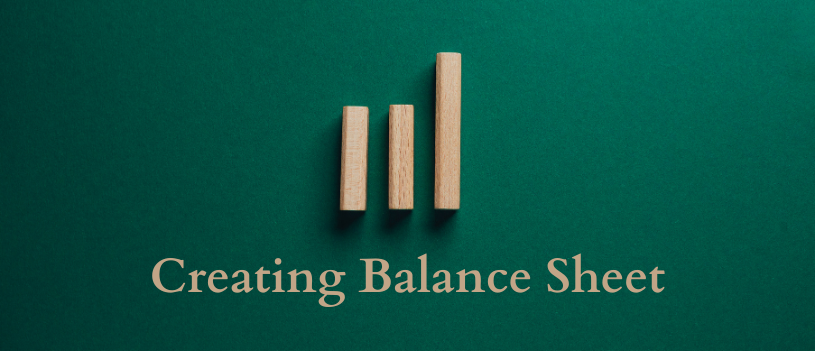Do you feel like financial reports are hard to decipher? Do you wonder what all the data means?
As a small business owner, it’s important to keep track of your financial data to ensure the success of your business. One essential tool for this is a balance sheet. By understanding and regularly documenting your assets, liabilities, and equity, you can gain valuable insights into your business’s financial health and make informed decisions.
Let’s take a deep dive into a balance sheet and what the information can tell you about your financial health.
What is a Balance Sheet?
A balance sheet is a financial statement that provides an overview of your business’s assets, liabilities, and equity. It offers a snapshot of your financial position at a specific point in time. It’s recommended to update your balance sheet at the end of a reporting period, although you can do it at any time during the year. We provide a balance sheet to our clients each month to help them understand how their business is doing.
How to Read a Balance Sheet
A balance sheet consists of three sections: assets, liabilities, and equity. These sections follow the formula: Assets = Liabilities + Equity. To understand a balance sheet, it’s important to review each section in detail.
Assets:
Assets are categorized based on their expected conversion to cash or value realization. Short-term assets, also known as current assets, include cash, marketable securities, accounts receivable, prepaid insurance, and inventory. Long-term assets include fixed assets such as machinery, land, and buildings, and intangible assets including patents and trademarks.
Liabilities:
Liabilities represent the money your business owes to others. Short-term liabilities, or current liabilities, include accounts payable, accrued expenses, taxes payable, and customer deposits. Long-term liabilities encompass long-term loans, capital leases, pension liabilities, and deferred compensation.
Equity:
Equity is the remaining value after subtracting liabilities from assets. It includes the par value of stock, additional paid-in capital from investors, and retained earnings. It can also include investments in or withdrawals of funds by you.
Creating a Balance Sheet
To create a balance sheet, organize your assets, liabilities, and equity into appropriate categories. This is most easily done with accounting software, but you can also use Excel, Google Sheets, or even a sheet of paper. Make sure your balance sheet equation (Assets = Liabilities + Equity) balances by double-checking your calculations.
Benefits of a Balance Sheet
A balance sheet helps you understand your business’s financial position, evaluate its performance over time, and communicate vital information to shareholders, investors, and lenders (if applicable). It enables you to make informed financial decisions and plan for the future. You can review ratios such as debt to equity, current liabilities compared to current assets, and return on equity.
A balance sheet is a crucial tool to track and analyze your financial position. By regularly creating and updating a balance sheet, you can gain insights into your business’s assets, liabilities, and equity, enabling you to make informed decisions and ensure the growth and success of your business in the long run.
If you need help with your bookkeeping and reporting, we can help! Reach out to us at 310-534-5577 or [email protected].
What Is a Balance Sheet? | How to Read a Balance Sheet (thehartford.com)
